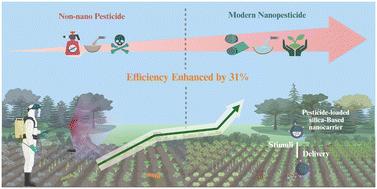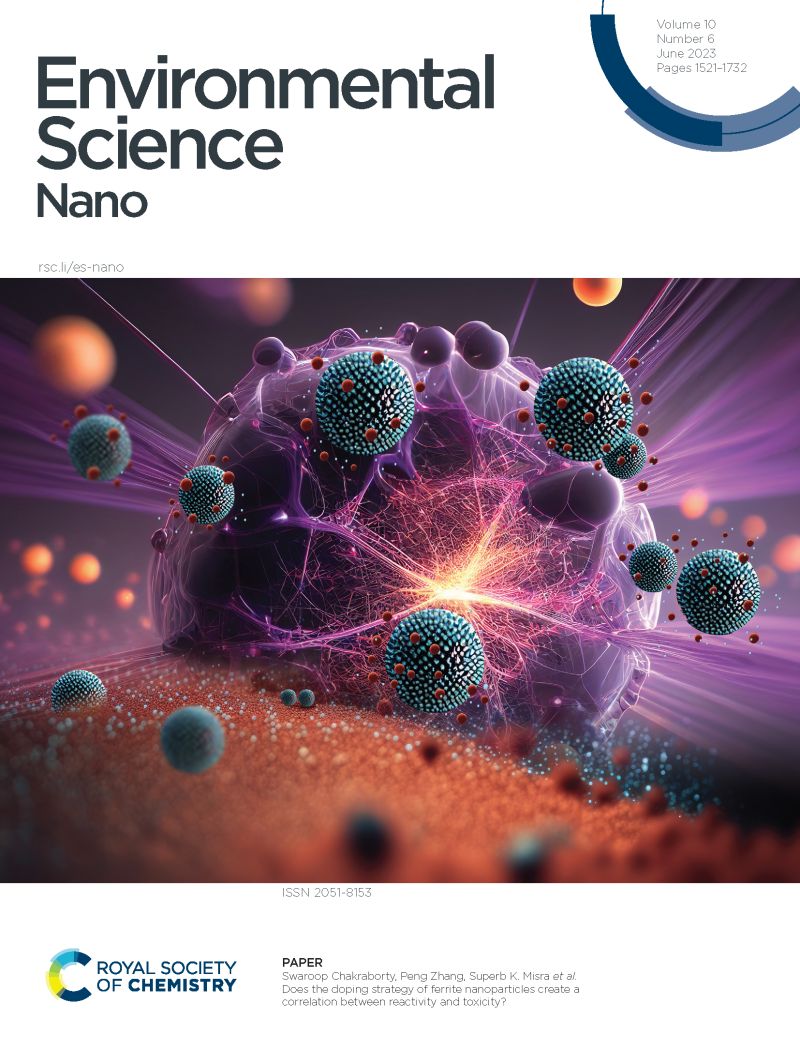Silica-based nanopesticides vs. non-nano formulations: a comparative study for sustainable agriculture
IF 5.1
2区 环境科学与生态学
Q1 CHEMISTRY, MULTIDISCIPLINARY
引用次数: 0
Abstract
The use of nanopesticides has emerged as a sustainable alternative to conventional formulations, offering improved delivery and minimized environmental harm. This review critically analyzes 99 peer-reviewed studies from 2016 to 2024, comparing silica-based nanopesticides to their non-nano counterparts in terms of physicochemical properties, efficacy, and environmental performance. Silica-based nanoparticles (SiO2 NPs), with high surface area, tunable porosity, and excellent biocompatibility, are shown to improve bioavailability, photostability, and controlled-release efficiency. On average, these nanoformulations demonstrate 32% greater pest control efficacy than conventional alternatives. Special attention is given to particle size, polydispersity index (PDI), and responsiveness to external environmental triggers such as pH, temperature, and ultraviolet (UV) exposure. This review also examines the uptake and translocation pathways of silica nanocarriers in plants and their interaction with active ingredients (AIs) at the molecular level. Despite laboratory success, limited field studies and unclear regulatory frameworks restrict their broader application. The porous nature of silica enables high pesticide loading and environmental responsiveness but may also pose long-term accumulation risks. Current definitions of “nanopesticides” based solely on particle size are critically challenged, as many silica-based formulations exceed the 100 nm threshold. Future efforts should prioritize biodegradable silica hybrids, scalable synthesis, and robust, multi-season field validation across diverse agroecological contexts. This review is the first to systematically compare silica-based and non-nano pesticide systems, offering comprehensive insights into performance trade-offs and practical limitations. Our findings highlight the urgent need for interdisciplinary research and harmonized regulatory frameworks to facilitate the safe and effective integration of silica-based nanocarriers into real-world agricultural practice.

硅基纳米农药与非纳米配方:可持续农业的比较研究
纳米农药的使用已经成为传统配方的一种可持续替代方案,它提供了更好的递送和最大限度地减少对环境的危害。本综述对2016年至2024年的99项同行评审研究进行了批判性分析,比较了硅基纳米农药与非纳米农药在理化性质、功效和环境性能方面的差异。二氧化硅纳米颗粒(SiO2 NPs)具有高表面积、可调孔隙度和良好的生物相容性,可提高生物利用度、光稳定性和控释效率。平均而言,这些纳米配方的害虫防治效果比传统替代品高出32%。特别关注的是颗粒大小、多分散性指数(PDI)以及对外部环境触发因素(如pH值、温度和紫外线照射)的响应性。本文还综述了二氧化硅纳米载体在植物体内的吸收和转运途径以及它们与活性成分(AIs)在分子水平上的相互作用。尽管实验室取得了成功,但有限的实地研究和不明确的监管框架限制了它们的广泛应用。二氧化硅的多孔性使其具有较高的农药负荷和环境响应性,但也可能造成长期积累的风险。目前仅基于颗粒大小的“纳米农药”定义受到严重挑战,因为许多硅基配方超过了100纳米的阈值。未来的工作应优先考虑可生物降解的二氧化硅杂交,可扩展的合成,以及在不同农业生态环境下进行可靠的多季节实地验证。这篇综述首次系统地比较了硅基和非纳米农药系统,提供了对性能权衡和实际限制的全面见解。我们的发现强调了跨学科研究和协调监管框架的迫切需要,以促进硅基纳米载体安全有效地整合到现实世界的农业实践中。
本文章由计算机程序翻译,如有差异,请以英文原文为准。
求助全文
约1分钟内获得全文
求助全文
来源期刊

Environmental Science: Nano
CHEMISTRY, MULTIDISCIPLINARY-ENVIRONMENTAL SCIENCES
CiteScore
12.20
自引率
5.50%
发文量
290
审稿时长
2.1 months
期刊介绍:
Environmental Science: Nano serves as a comprehensive and high-impact peer-reviewed source of information on the design and demonstration of engineered nanomaterials for environment-based applications. It also covers the interactions between engineered, natural, and incidental nanomaterials with biological and environmental systems. This scope includes, but is not limited to, the following topic areas:
Novel nanomaterial-based applications for water, air, soil, food, and energy sustainability
Nanomaterial interactions with biological systems and nanotoxicology
Environmental fate, reactivity, and transformations of nanoscale materials
Nanoscale processes in the environment
Sustainable nanotechnology including rational nanomaterial design, life cycle assessment, risk/benefit analysis
 求助内容:
求助内容: 应助结果提醒方式:
应助结果提醒方式:


